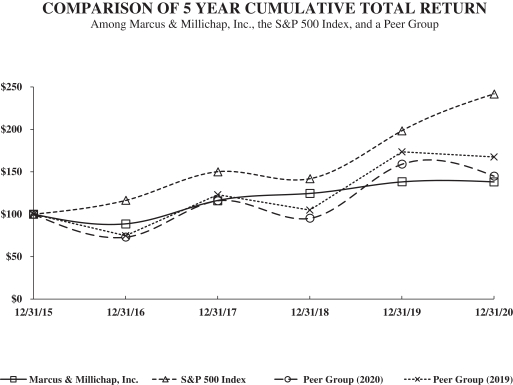financial assets measured at amortized cost and marketable debt securities, available-for sale, which requires that identified credit losses be presented as an allowance rather than as an impairment write-down. Reversals of credit losses (in situations in which the estimate of credit losses declines) are permitted in the reporting period that the change occurs. Previously, U.S. GAAP prohibited reflecting any reversals of impairment charges. The Company adopted the new standard on January 1, 2020 using the modified-retrospective transition method for assets measured at amortized cost other than marketable debt securities, available-for-sale, which was adopted using a prospective transition approach as required by the new standard. On the adoption date, the Company recorded a cumulative-effect adjustment related to an allowance for credit losses associated with commissions receivable and advances and loans, net of tax in the amount of $
33,000 with the offset to retained earnings as of the beginning of the period presented after adoption. The adoption of ASU
2016-13
did not have a material impact on the Company’s investment policy and impairment model for marketable debt securities,
The Company elected the practical expedient to exclude accrued interest from both the fair value and the amortized cost basis of marketable debt securities,
for the purposes of identifying and measuring an impairment.
In August 2018, the FASB issued ASU
No. 2018-15,
Internal-Use
Software (Subtopic
350-40)
- Customer’s Accounting for Implementation Costs Incurred in a Cloud Computing Arrangement That is a Service Contract
(“ASU
2018-15”).
ASU
2018-15
aligns the requirements for capitalizing implementation costs incurred in a hosting arrangement that is a service contract with the requirements for capitalizing implementation costs incurred to develop or obtain
internal-use
software (and hosting arrangements that include an internal use software license), by permitting a customer in a cloud computing arrangement that is a service contract to capitalize certain implementation costs as if the arrangement was an
internal-use
software project. The Company adopted the new standard effective January 1, 2020, using the prospective method. The adoption of ASU
2018-15
did not have a material effect on the Company’s consolidated financial statements.
In December 2019, the FASB issued ASU
No. 2019-12,
Income Taxes (Topic 740): Simplifying the Accounting for Income Taxes
(“ASU
2019-12”).
ASU
2019-12
is effective for reporting periods beginning after December 15, 2020. For the Company, the new standard will be effective on January 1, 2021. ASU
2019-12
simplifies the accounting for income taxes by eliminating certain exceptions including the methodology for calculating income taxes in an interim period and the recognition of deferred tax liabilities related to outside basis differences. It also clarifies and simplifies other aspects of the accounting for income taxes such as
step-up
in tax basis for goodwill and interim recognition of enactment of tax laws or rate changes. The Company early adopted this guidance effective January 1, 2020, and the adoption of this standard did not have a material impact on the Company’s consolidated financial statements.
In March 2020, the FASB issued ASU
No. 2020-04,
Reference Rate Reform (Topic 848): Facilitation of the Effects of Reference Rate Reform on Financial Reporting
(“ASU
2020-04”).
ASU
2020-04
provides temporary optional exceptions to the guidance in U.S. GAAP on contract modifications to ease the financial reporting burdens related to the expected market transition from the London Interbank Offered Rate (LIBOR) and other interbank offered rates to alternative reference rates, such as the Secured Overnight Financing Rate (“SOFR”). ASU
2020-04
is effective for all entities upon issuance and may be applied prospectively to contract modifications through December 31, 2022. The guidance applies to the Company’s Credit Agreement (see Note 16 – “Commitments and Contingencies”), which references LIBOR, and will generally allow it to account for and present a modification as an event that does
not require contract remeasurement at the modification date or reassessment of a previous accounting determination. As of December 31, 2020, the Company has not drawn funds from the credit facility. The Company continues to evaluate the impact of this new standard and does not expect ASU
2020-04
to have a material effect on its consolidated financial statements.


